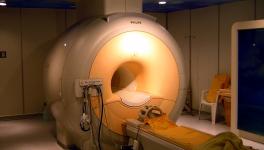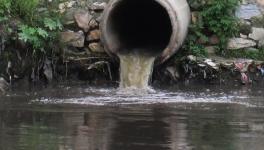Microplastic Burden in Indian Ocean Clearly Measurable, Says New Study
Tiny microplastic particles are increasingly proving to be a potential environmental hazard. These are essentially plastic particles, and their size varies from approximately 1 micron (one-thousandth of a millimeter) to 5 millimetres. The accurate analysis of these tiny particles is a hard task, precisely due to high error rates and high time demand. However, they are analysed at multiple levels and scientists warn about their long term effect on the marine ecosystem.
A latest research published in the journal ‘Environmental Pollution’ suggests that these tiny dangerous particles are visibly measurable in the Indian Ocean. The new study not only measures the microplastic in Indian Ocean but also has developed a new method for extracting and identifying microplastic particles from water samples.
The new method, as claimed by the researchers, includes utilising the technique called LDIR (Laser Direct Infrared Chemical Imaging). This has been combined with a new protocol for sample preparation to identify microplastic in water samples. This involves the decomposition of interfering components in the sample by chemical and enzymatic reactions. This required fewer work steps in comparison to previous methods. Led by Daniel Profrock, this novel protocol was developed in the Department of Environmental Chemistry, Helmholtz-Zentrum Hereon, Germany.
Commenting on the method, one of the lead authors of the study, Lars Hildebrant said, “In this study, the device, which uses a so-called quantum cascade laser, demonstrated its advantages in the analysis of microplastic particles in environmental samples. It is fast and automatable, which is important for a future standard procedure.”
The analysis revealed that, on average, 50 microplastic particles and fibres in one cubic metre of water were found in the near-surface water of the Indian Ocean. This amount of microplastic is unexpected in the Indian Ocean and marks a high level of presence of the micropollutant.
The study also highlighted the major sources from which the microplastics come into the ocean water; it says that 49% of these are estimated to be sourced from paint particles. These paint particles are thought to be originating from the dismantling of ship painting. This is followed by PET (Polyethylene terephthalate) with a contribution of 25%. Notably, PET is a component used in synthetic clothing (in the form of polyester microfibers) and the production of bottles used to store beverages. PET’s potential source is washing clothes and degrading beverage bottles. Recent years have witnessed a continuous increase in microplastic pollution. Importantly, plastic particles now could be found in all marine living organisms.
El Gareb, another lead author of the study, highlighted the routes through which microplastics majorly enter the ocean. He said, “Our results show that many microplastic particles, such as polypropylene, polystyrene, and polyethylene, have been fragmented on their way from land-based sources to the open ocean. Thus, they are even more easily ingested by organisms. Through the Sunda Strait, a strait between Sumatra and Java, a large share of the found plastic waste may have entered the Indian Ocean, making it a hotspot in terms of microplastic pollution.”
Another major issue of the presence of microplastics overwhelmingly in the ocean water is that a significant portion of the waste travels to countries that border the Indian Ocean. Due to ineffective waste management strategies, millions of tons of micropollutants enter the seawater every year, harming the marine ecosystem.
The authors of the study also aim to use their newly developed method in studying microplastic pollutants in other oceans of the world. Tristan Zimmermann, another author of the study, talking about their future plans, said, “We will sample arctic waters at the east coast of Greenland this August during a cruise with the research vessel MARIA S. MERIAN. Here, the data basis regarding microplastic particles is still very insufficient." The researchers want to address the broader question of how significant microplastic pollution is in remote regions and how severely they impact the ecosystem.
Get the latest reports & analysis with people's perspective on Protests, movements & deep analytical videos, discussions of the current affairs in your Telegram app. Subscribe to NewsClick's Telegram channel & get Real-Time updates on stories, as they get published on our website.
















